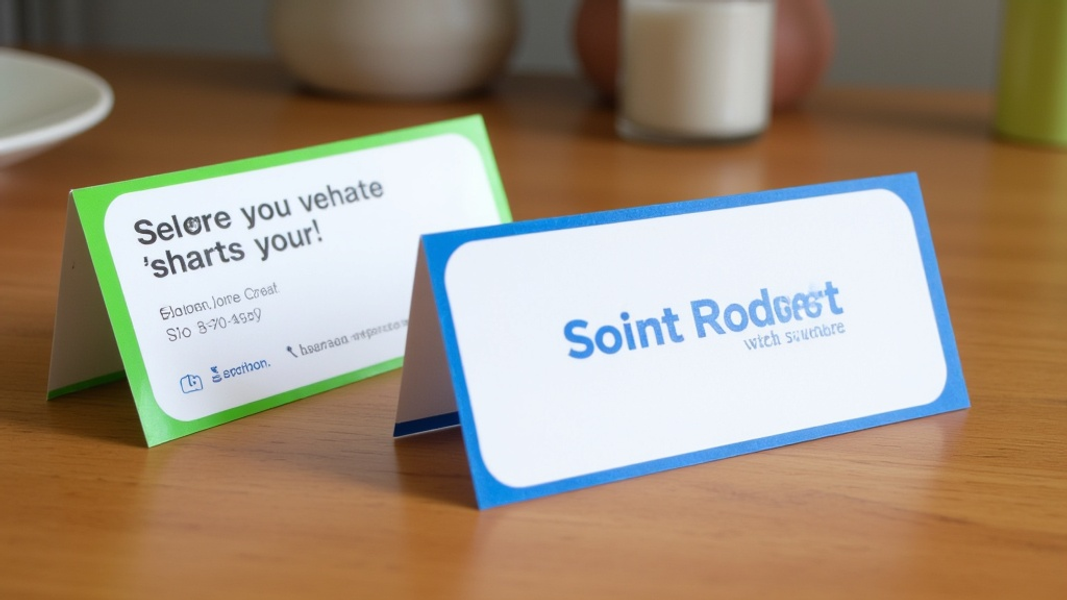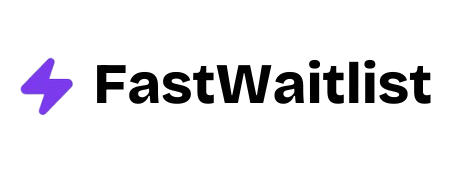
Are you tired of seeing your SaaS company struggle to gain traction? You're not alone. Many software businesses face tough challenges in a crowded market. But don't worry - with the right approach, you can turn things around and start growing your customer base.
This post will share practical tips to help your SaaS business stand out, win more customers, and keep them happy for the long haul. We'll cover everything from the basics of SaaS marketing to advanced tactics that can supercharge your growth. Let's dive in and start boosting your SaaS success!
Why SaaS Marketing Is Different
Before we jump into specific tips, it's important to understand why marketing a SaaS product is unique. Unlike selling physical goods or one-time services, SaaS companies face some special challenges.
Long Sales Cycles and Complex Decisions
Buying software for a business isn't like picking up a new pair of shoes. It often involves multiple decision-makers and can take weeks or even months. This means your marketing needs to nurture leads over time and provide value at each stage of the buying process.
For example, a company looking for new project management software might start by reading blog posts about productivity tips. They then move on to comparing different tools, watching demo videos, and finally scheduling calls with sales reps. Your marketing needs to support this entire journey.
The Never-Ending Customer Relationship
Once someone buys your software, the relationship is just beginning. You need to keep proving your value month after month to prevent cancellations. This shifts your focus from just acquiring new customers to also keeping your current ones happy and engaged.
Think about it like this: If you run a gym, you don't just need to convince people to sign up. You need to keep them coming back and seeing results, or they'll cancel their membership. SaaS works the same way.
Teaching About Invisible Products
Unlike a car or a new phone, people can't pick up and hold your software. This means your marketing needs to work extra hard to show the benefits and value of your product. You're often selling the promise of saved time, increased productivity, or better insights - things that aren't always easy to demonstrate in a quick ad or product photo.
Now that we understand what makes SaaS marketing unique, let's dive into some strategies that can help your business grow.
Content Marketing: Your Secret Weapon
One of the most powerful tools in your SaaS marketing toolkit is content. By creating helpful, informative content, you can attract potential customers, build trust, and showcase your expertise. Here are some key types of content to focus on:
Helpful Blog Posts
Start by creating blog posts that address common problems or questions in your industry. For example, if you sell accounting software, you might write posts like "5 Common Tax Mistakes Small Businesses Make" or "How to Choose the Right Accounting System for Your Startup."
The key is to focus on being genuinely helpful, not just promoting your product. By consistently publishing valuable content, you'll build an audience of potential customers who see you as a trusted resource.
In-Depth Guides and Ebooks
For more complex topics, consider creating longer-form content like guides or ebooks. These can be great for lead generation - offer them as free downloads in exchange for an email address.
A company like HubSpot does this really well. They offer detailed guides on topics like inbound marketing, sales strategies, and customer service best practices. This positions them as experts in their field and gives potential customers a taste of the value they provide.
Video Tutorials and Product Demos
Don't forget about video content! Short tutorial videos can be a great way to show off your product's features and benefits. You can share these on your website, social media channels, and even use them in email marketing campaigns.

SEO: Getting Found Online
Search engine optimization (SEO) is crucial for SaaS companies. When people search for solutions to problems your software solves, you want to show up in the results. Here are some tips to improve your SEO:
Target the Right Keywords
Start by researching keywords related to your product and industry. Focus on long-tail keywords - longer, more specific phrases that show clear intent. For example, instead of just targeting "project management software," you might go after "project management software for remote teams" or "Agile project tracking tools."
Use tools like Google Keyword Planner or Ahrefs to find relevant keywords with decent search volume but lower competition.
Optimize Your Product Pages
Make sure your main product pages are well-optimized for search engines. This means:
- Using your target keywords in page titles, headers, and throughout the content
- Writing clear, benefit-focused meta descriptions
- Including alt text for images
- Having a clear page structure with proper header tags (H1, H2, H3, etc.)
Build Quality Backlinks
Getting other reputable websites to link to yours is a key part of SEO. Some ways to build backlinks include:
- Guest posting on industry blogs
- Creating shareable infographics or original research
- Partnering with other companies for co-marketing efforts
- Getting listed in relevant industry directories
Remember, focus on quality over quantity. A few links from highly respected sites in your industry are worth more than dozens of low-quality links.
Email Marketing: Nurturing Leads and Customers
Email remains one of the most effective marketing channels for SaaS companies. It allows you to stay in touch with leads and customers, providing value and nudging them towards conversion or upgrade. Here are some key email campaigns to consider:
Onboarding Sequences
When someone signs up for a free trial or creates an account, send them a series of emails to help them get started. These should guide new users through key features and help them see the value of your product quickly.
For example, a project management tool might send emails like:
- Welcome and quick start guide
- How to create your first project
- Inviting team members and setting up permissions
- Using advanced features like time tracking or reporting
- Case study of a successful customer
Regular Newsletters
Keep your subscribers engaged with a consistent newsletter. This could include:
- Tips and best practices related to your industry
- New feature announcements
- Customer success stories
- Upcoming webinars or events
The key is to provide value, not just promote your product. Intercom does a great job with their newsletter, sharing insights on customer communication and support.
Win-Back Campaigns
If a customer cancels their subscription or their free trial expires without converting, don't give up! Send a series of emails to try to win them back. This might include:
- A survey to understand why they left
- New feature announcements they might have missed
- Special offers or discounts to reactivate their account
Remember to respect their decision if they don't want to come back - don't be pushy or send too many emails.
Advanced Tactics for SaaS Growth
Once you've got the basics down, here are some more advanced strategies to take your SaaS marketing to the next level:
Account-Based Marketing (ABM)
ABM flips traditional marketing on its head. Instead of casting a wide net and hoping to catch some fish, you identify specific "target accounts" and create personalized marketing campaigns just for them.
This works especially well for B2B SaaS companies selling to larger enterprises. Here's how to get started:
- Identify your ideal customer profile
- Make a list of target companies that fit this profile
- Research key decision-makers at these companies
- Create personalized content and outreach plans for each account
- Align your sales and marketing teams to work together on these accounts
ABM can be more resource-intensive, but it often leads to higher conversion rates and larger deal sizes.
Building a Customer Advocacy Program
Your happiest customers can be your best marketers. A customer advocacy program turns your biggest fans into active promoters of your product. Here's how to build one:
- Identify your most enthusiastic customers
- Offer incentives for participation (early access to new features, special support, etc.)
- Make it easy for them to share their experiences (provide templates, graphics, etc.)
- Showcase their success stories on your website and social media
- Create a community where advocates can connect with each other
Slack does this well with their Slack Champions program, which recognizes power users and gives them special perks.
Conversion Rate Optimization (CRO)
Small improvements in your conversion rates can lead to big gains in revenue. CRO is all about testing and improving different elements of your website and marketing funnel. Some areas to focus on:
- Landing page design and copy
- Sign-up forms and processes
- Pricing page layout
- Call-to-action buttons
- Email subject lines and content
Use tools like Google Optimize or VWO to run A/B tests and see what works best for your audience.

Measuring Your SaaS Marketing Success
All these strategies are great, but how do you know if they're actually working? Here are some key metrics to track:
Customer Acquisition Cost (CAC)
This is how much it costs you to acquire a new customer. Calculate it by dividing your total marketing and sales expenses by the number of new customers acquired in a given period.
Customer Lifetime Value (LTV)
This estimates how much revenue a customer will generate over their entire relationship with your company. A higher LTV relative to CAC means you're creating more value than you're spending to acquire customers.
Monthly Recurring Revenue (MRR) Growth
Track how your monthly recurring revenue is growing over time. This is a key indicator of the health of your SaaS business.
Churn Rate
This measures how many customers you're losing over a given period. A high churn rate can quickly eat into your growth, so it's crucial to keep this as low as possible.
Common SaaS Marketing Mistakes to Avoid
As we wrap up, let's look at some common pitfalls that can trip up SaaS marketers:
Focusing Too Much on Acquisition
While getting new customers is important, don't neglect your existing ones. It's often much cheaper to keep a current customer than to acquire a new one. Make sure you're investing in customer success and retention efforts.
Not Differentiating Yourself
In a crowded SaaS market, you need to clearly communicate what makes your product unique. Don't just list features - focus on the specific problems you solve and the unique value you provide.
Underestimating the Importance of Education
Many potential customers might not even realize they have a problem your software can solve. Invest in educational content that helps people understand the issues in your industry and how software like yours can help.
Wrapping Up: Your SaaS Marketing Action Plan
We've covered a lot of ground in this post. Here's a quick summary of key actions you can take to improve your SaaS marketing:
- Create helpful content that addresses your audience's pain points
- Optimize your website and content for search engines
- Use email marketing to nurture leads and engage customers
- Consider advanced tactics like ABM and customer advocacy programs
- Continuously test and optimize your marketing efforts
- Track key metrics to measure your success
Remember, effective SaaS marketing is an ongoing process. Keep learning, testing, and refining your approach. With persistence and the right strategies, you can build a strong, growing customer base for your SaaS business.
Ready to take your SaaS marketing to the next level? Start by picking one strategy from this post and implementing it this week. Track your results and keep iterating. Your future customers are out there - it's time to help them find you!
